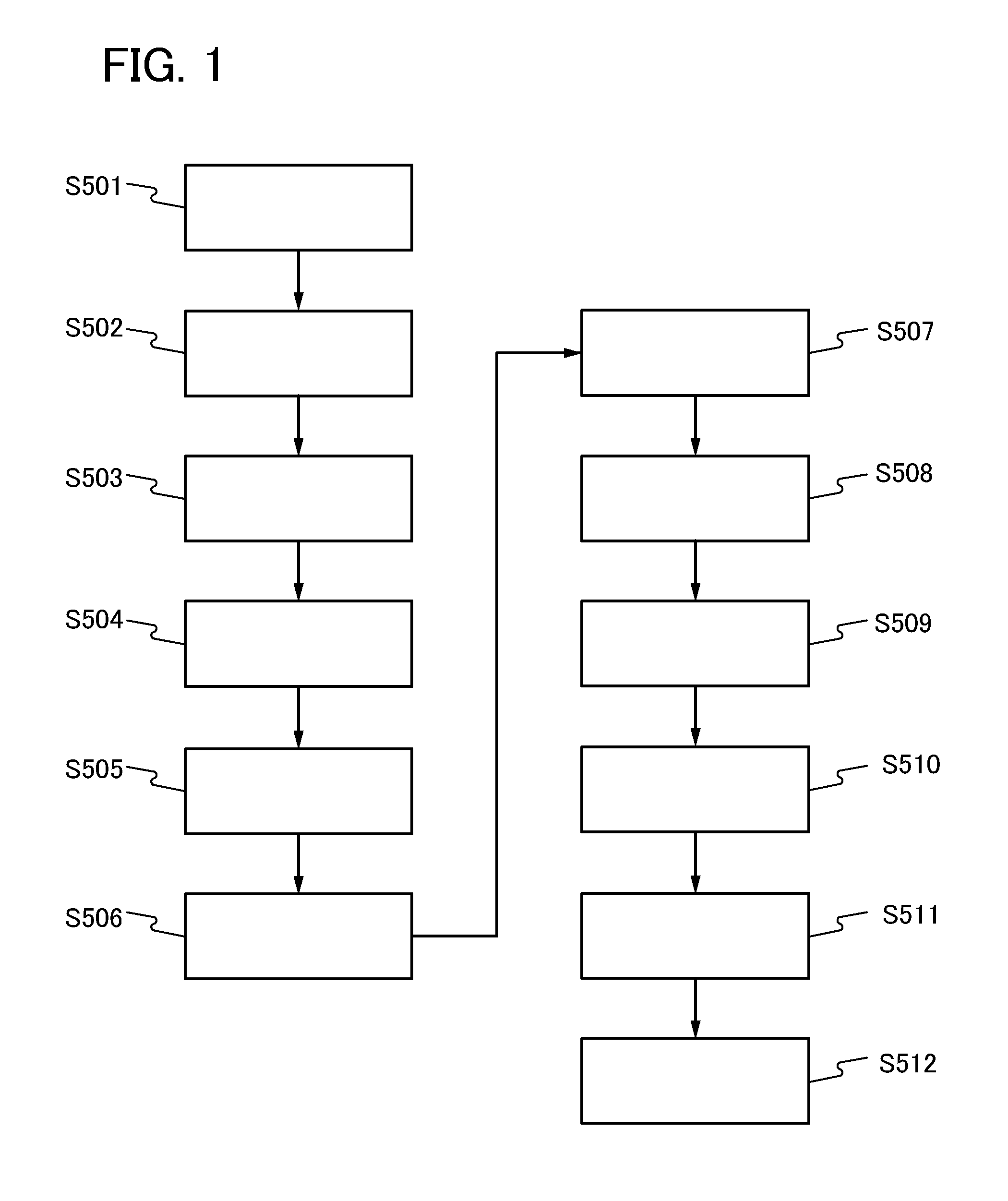Method for manufacturing semiconductor device
a semiconductor film and film technology, applied in the direction of semiconductor devices, electrical equipment, basic electric elements, etc., can solve the problems of significant impairing of threshold voltage of transistor reliability, and achieve the effects of stable electrical characteristics, less variation in threshold voltage, and reduced hydrogen contained in oxide semiconductor films
- Summary
- Abstract
- Description
- Claims
- Application Information
AI Technical Summary
Benefits of technology
Problems solved by technology
Method used
Image
Examples
embodiment 1
[0038]In this embodiment, description is made on a method for manufacturing a top-gate top-contact transistor using an oxide semiconductor with less entry of hydrogen into a film and an interface between films.
[0039]FIG. 1 is a flow chart showing a path of a substrate in a multi-chamber film formation apparatus. FIGS. 2A to 2D are cross-sectional views that shows a method for manufacturing a semiconductor device and corresponds to the flow diagram in FIG. 1.
[0040]FIG. 3 is a multi-chamber film formation apparatus. The film formation apparatus includes a substrate supply chamber 11 having three cassette ports 14 accommodating a substrate, a load lock chamber 12a, a load lock chamber 12b, a transfer chamber 13, a substrate processing chamber 15, a film formation chamber 10a with a leakage rate less than or equal to 1×10−10 Pa·m3 / sec, a film formation chamber 10b with a leakage rate less than or equal to 1×100 Pa·m3 / sec, and a film formation chamber 10c with a leakage rate less than or...
embodiment 2
[0103]In this embodiment, description is made on a method for manufacturing a bottom-gate top-contact transistor using an oxide semiconductor with less entry of hydrogen into a film and an interface between films.
[0104]FIG. 6 is a flow chart showing a path of a substrate in a multi-chamber film formation apparatus. FIGS. 7A to 7C are cross-sectional views corresponding to a manufacturing flow in FIG. 6. A multi-chamber film formation apparatus similar to that in Embodiment 1 is used.
[0105]First, as shown in a step S601 in FIG. 6, a substrate 200 is put on the cassette port 14 in the substrate supply chamber 11.
[0106]Next, as shown in a step S602 in FIG. 6, the gate valve of the load lock chamber 12a set to an atmospheric pressure state is opened, the substrate 200 is transferred from the cassette port 14 to the load lock chamber 12a with the first transfer robot, and then the gate valve is closed.
[0107]The load lock chamber 12a is evacuated and set to a vacuum state after the substr...
embodiment 3
[0137]In this embodiment, description is made on a method for manufacturing a bottom-gate top-contact transistor using an oxide semiconductor with less entry of hydrogen into a film and an interface between films with reference to FIGS. 10A to 10E. The method is different from that in Embodiment 2. Note that steps up to and including those in the flow of FIG. 6 and FIGS. 7A to 7C are similar to those in Embodiment 2.
[0138]Manufacturing steps up to and including those in FIGS. 10A and 10B are similar to those in the manufacturing steps up to and including those in FIGS. 8A and 8B.
[0139]After the oxide semiconductor film 206 is formed, the substrate 200 is subjected to heat treatment or plasma treatment. By subjecting the oxide semiconductor film 206 to the heat treatment or the plasma treatment, the oxide semiconductor film 206 can be dehydrated or dehydrogenated. The heat treatment or the plasma treatment is performed at a temperature higher than or equal to 150° C. and lower than t...
PUM
 Login to View More
Login to View More Abstract
Description
Claims
Application Information
 Login to View More
Login to View More - R&D
- Intellectual Property
- Life Sciences
- Materials
- Tech Scout
- Unparalleled Data Quality
- Higher Quality Content
- 60% Fewer Hallucinations
Browse by: Latest US Patents, China's latest patents, Technical Efficacy Thesaurus, Application Domain, Technology Topic, Popular Technical Reports.
© 2025 PatSnap. All rights reserved.Legal|Privacy policy|Modern Slavery Act Transparency Statement|Sitemap|About US| Contact US: help@patsnap.com



